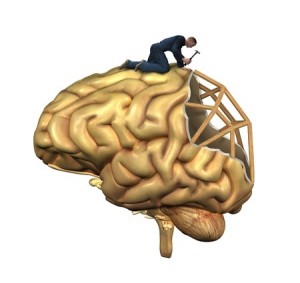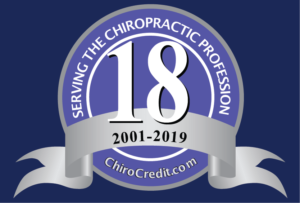 Over the last decade, research has demonstrated that spinal manipulation can change various aspects of nervous system function, including muscle reflexes, cognitive processing, reaction time, and the speed at which the brain processes information. One research group from New Zealand (Haavik et al) has hypothesized that the joint dysfunction part of the chiropractic clinical construct, the vertebral subluxation, results in altered afferent input to the central nervous system (CNS) that modifies the way in which the CNS processes and integrates all subsequent sensory input. This processing (i.e., sensorimotor integration) is a central nervous system (CNS) function that appears most vulnerable to altered inputs.
Over the last decade, research has demonstrated that spinal manipulation can change various aspects of nervous system function, including muscle reflexes, cognitive processing, reaction time, and the speed at which the brain processes information. One research group from New Zealand (Haavik et al) has hypothesized that the joint dysfunction part of the chiropractic clinical construct, the vertebral subluxation, results in altered afferent input to the central nervous system (CNS) that modifies the way in which the CNS processes and integrates all subsequent sensory input. This processing (i.e., sensorimotor integration) is a central nervous system (CNS) function that appears most vulnerable to altered inputs.
Many studies show that chiropractic adjustments result in changes to sensorimotor integration within the central nervous system. Do these changes correlate with beneficial clinical outcomes? That is not completely determined yet. It is also not clear whether the changes seen after adjustments are due to the correction of vertebral subluxation, therefore normalizing aberrant afferent input to the CNS, or are they merely due to afferent influx associated with the thrusting into the spine? These questions remain to be answered. The level of CNS involvement and the exact mechanisms underlying these neural adaptations following chiropractic adjustments remain unclear.
This new study reported here sought to investigate possible neural plastic changes with spinal manipulation by measuring H-reflexes and V-waves. The H-reflex is an electrically evoked response that operates via the same neuronal circuitry as stretch reflexes. The H (Hoffmann) reflex may be useful to assess motoneuron excitability in vivo while also reflecting presynaptic inhibition of Ia afferent synapses. The so-called V-wave, which is an electrophysiological variant of the H-reflex, can be recorded during maximal voluntary motor contractions. The elicited V-wave response may be used to reflect the level of efferent neural drive from spinal α-motoneurons during maximal voluntary contraction (MVC).
While several previous studies have shown a decrease in the H-reflex indicating a transient attenuation of motoneuronal activity of the lumbosacral spine in both asymptomatic subjects and low back pain patients, new advances in data collection and processing have occurred since then. The purpose of this study was to take advantage of these recent technical and methodological discoveries related to the H-reflex and V-waves and explore what effect, if any, spinal manipulation of vertebral subluxations will have on them.
Methods:
Two studies were included in the paper. All participants were men, between the ages of 18 and 40 and were required to have evidence of spinal dysfunction and a previous history of subclinical pain, but absence of degenerative conditions of the spine or known contraindications to spinal manipulation. Instrumentation included: 1) surface EMG to record the (SEMG) activity of the soleus muscle (SOL) of the right leg; 2) electrical stimulation producing the H-, M-, and V-waves of the SOL muscle by stimulation of the tibial nerve and; 3) force recordings performed using a strain gauge attached to a custom-made ankle brace, while the subject performed maximum voluntary ankle dorsiflexion contractions.
During study one, ten subjects attended two sessions each, the control and the experimental (spinal manipulation) session. A second study was added wherein a group of eight participants attended two more sessions each, where only force was measured. The order of these sessions were randomized and at least 1 week separated the sessions. All experiments were performed on the right leg, while the volunteers comfortably lay prone on a massage table with their right leg firmly strapped to the table with Velcro. The following measures were collected pre and post interventions: SEMG signals during MVC; H-and M-recruitment curves; H-reflex area under curve normalized to Mmax (Harea/Mmax), H-reflex threshold, V-wave normalized to Mmax (V/Mmax), M-wave slope, H-reflex slope and the mean power frequency (MPF) of a fast Fourier transform (FFT) of the SEMG during MVC.
The entire spine and sacroiliac joints were assessed for segmental dysfunction (vertebral subluxation) and adjusted where deemed necessary by a registered chiropractor with at least 10-years clinical experience using high-velocity, low-amplitude techniques. The control condition involved passive and active movements of the subject’s head, spine, and body into the manipulation setup positions but without performing the adjustment.
Results:
- the threshold to elicit the H-reflex significantly decreased by 8.5% in the spinal manipulation group
- the SEMGs showed a significant drop in the power spectrum after controls but there was no fatigue demonstrated in the power spectrum after spinal manipulation
- for study 1: maximal voluntary contraction as determined by SEMG increased significantly by 59.5% after spinal manipulation and decreased significantly by 13.3% after control
- for study 2: maximal voluntary contraction increased significantly by 16.1% after spinal manipulation and decreased significantly by 11.4% after control
- the V-wave amplitude (V/Mmax ratio) increased significantly by 45% after spinal manipulation and reduced significantly by 23% after control
Key Points
- this study is the first to indicate that chiropractic adjustments can induce significant changes in the net excitability for the low-threshold motor units/and or alters the synaptic efficacy of the Ia synapse
- the improvements in maximal voluntary contraction following spinal manipulation are likely attributed to the increased descending drive and/or modulation in afferents
- spinal manipulation prevents fatigue
- these results suggest that spinal manipulation may be indicated as part of the treatment for the patients who have lost tonus of their muscle and/or are recovering from muscle dysfunction such as stroke or orthopedic operations
- these findings will also be of interest to athletes and perhaps the general public
Reference: Niazi IK, Türker KS, Flavel S, Kinget M, Duehr J, Haavik H. Changes in H-reflex and V-waves following spinal manipulation. Exp Brain Res. 2015 Apr;233(4):1165-73. doi: 10.1007/s00221-014-4193-5. Epub 2015 Jan 13. PubMed



